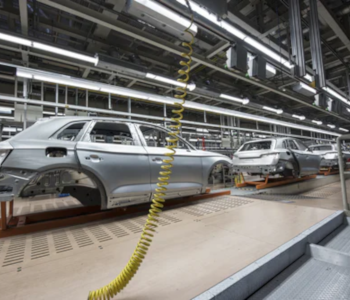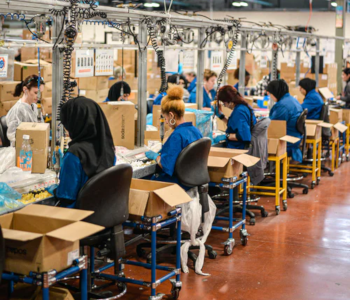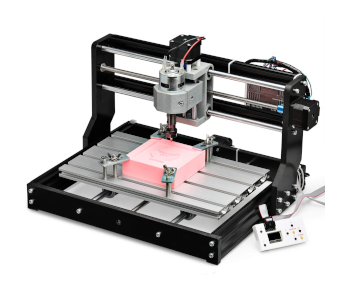7 Types of Manufacturing Methods
Through the years, technology has evolved to satisfy the growing needs of various commercial industries. Each innovation feeds even more innovation, creating a loop of technological advancement that continues up to this day. This has created an environment where manufacturers are equipped for just about any volume or type of consumer demand.
Manufacturing refers to the mass production of finished goods from raw materials using any combination of human labor, tools, and machines. With such a broad definition, it is hardly surprising that manufacturing comprises a vast ecosystem of various methods. What exactly are these manufacturing methods and what objectives do they satisfy?
Why the need for so many manufacturing methods?
As a whole, manufacturing methods refer to techniques of producing finished goods from raw materials, the volume and specifications of which depend on market demand and customer requirements. This means that a manufacturing method must be chosen and implemented based on the specific product being made, how much of its needs to be produced, and the available tools on-hand.
Thus, the development of several manufacturing methods came about to balance the needs of customers and the economics of manufacturing. As we shall see later, different manufacturing methods have workflows based on different ideologies, all geared towards serving customer requirements in the most economical way possible.
1. Mass production

The most common manufacturing method is mass production – a process by which a large volume of finished goods is produced based on set quality or product standards. Although the concept of mass production has been around even before the Industrial Revolution, it is only through the development of machine tools that the practice of modern mass production as we know it today has started.
It is also through mass production that the concept of assembly lines was developed. An assembly line is simply a conveyor, whether automated or manually driven, that passes a single part from one step to the next. In more complex manufacturing processes, several parallel assembly lines may exist.
The economics of mass production are delivered via several factors. The use of dedicated assembly lines for a limited number of products saves time in tooling changes and materials preparation. Automation also means that there is less labor cost needed and that the effects of human error are minimized. Moreover, a fully set up automated process can create a huge volume of orders at a much shorter time than traditional manual methods.
The main limitation of mass production is that it’s very inflexible. These methods do not respond well to design changes and can hardly accommodate requests for customization. This lack of versatility can make mass production methods unsuitable for markets that require the regular introduction of new or redesigned products. With this in mind, greater customization has become the focus of advancement in mass production technology.
Mass production is used for a wide range of products – from household items to intermediate products used in large-scale industries. As you would expect, these products are also treated differently. Under the umbrella of mass production, these are the common sub-types:
Discrete manufacturing
The focus of discrete manufacturing is the production of distinct items – objects that can be counted and are easily identifiable. Common examples include pieces of furniture, automobile parts, aircraft parts, and other household items.
A characteristic of discrete manufacturing is that the process can be divided into distinct steps or parts. Each step can be started or stopped, independent of all the other steps. This makes discrete manufacturing a little more flexible and easier to plan. The output from these different steps can be put together at the end or stocked until they are ready for use in the succeeding processes.
Process manufacturing
In contrast to discrete manufacturing, process manufacturing refers to the production of goods that cannot be counted as discrete units. Examples include gases, powders, or liquids.
A distinguishing characteristic of process manufacturing is that the goods in process can no longer be distilled back to their basic components. This means that there is less room for error in process manufacturing, requiring higher in-process quality standards.
The methods of process manufacturing are also more continuous in nature. The intermediate product of one step has to be passed over to the next step with little change for stoppage or batch storage. This means that process manufacturing is a technique that is even more inflexible than discrete manufacturing. Changing over from one product to another typically means stopping the whole system to undergo changeover procedures.
Repetitive manufacturing
Repetitive manufacturing refers to a process that is designed to manufacture repeated products over a long period while committing to a fixed production rate. Thus, the process is not focused on satisfying a fixed batch of orders – instead, the process has to be designed to satisfy a number of orders produced per hour or per day.
In particular scenarios, a repetitive manufacturing process is designed to produce the same product all year round, 24 hours a day, barring necessary stoppage for maintenance. The focus on production rates means that there is a reduced effort in mid-process control and minimal costs for storage.
With accelerate and guaranteed production rates, repetitive manufacturing is the preferred method for industries that are focused on efficiency. However, it is also very inflexible – repetitive manufacturing leaves no room for any product or process modification and can hardly accommodate any redesign or customization requirements.
2. Job production

Job production, also called one-off production, refers to the process of creating custom work or one-off products. This implies that such products are required in batches much smaller than those typically manufactured using mass production methods.
Job production can be done to create products ranging from replacement car parts or custom machined parts to the construction of an entire factory. One of the distinguishing characteristics of job production is that the manufacturing team typically has to finish one project before moving on to the next.
The method makes use of specialized production areas rather than assembly lines. Job production can be carried out by small fabrication shops or machine shops with craftsmen and skills dedicated to a certain set of products. This level of dedication and specialization typically produces finished goods of better quality – a key advantage of job production.
Flexibility and customization are two other benefits of job production. Through techniques such as CAD drawing or 3D printing, job printing makes the manufacture of custom parts or replacement parts that are no longer being mass-produced possible. Fabrication shops can also better accommodate requests for modification of existing designs to better meet customer requirements.
Compared to mass production, job production is a much slower process. Since job production typically needs to start with a design step, each job may need to go through several cycles of calculations, reviews, and redesigns before the team can move on to actual manufacturing. Even then, the requirement for highly skilled labor and the low volume of orders means that the products made through job production are necessarily more expensive.
3. Batch production

Batch production is a semi-continuous process where intermediate products are manufactured in specified amounts and stored as batches. An entire batch production process may be comprised of several steps with each batch going through these successive steps separated by periods of storage or quality checks. This is in contrast to a true continuous process where intermediate products no periodic checks are done on in-process goods.
The goal of batch production is for the process to benefits from the same economic advantages of continuous production but have greater room for quality checks or customization. For instance, sudden changes in design or material can be implemented between different batches.
Producing in batches also gives more opportunities for quality control. If a process error occurs, the batch can be set aside while the rest of the process continues, resulting in less downtime. If major changes need to be made to the process, producing in batches also means that the company will be taking less risk.
Although batch production has a similar model to mass production, the need to produce in batches necessarily means that the process will be slower. The facility will also need to heavily invest in storage for in-process products and will need to implement more rigorous scheduling and control measures to ensure that batches are smoothly transmitted from one step to the next while adhering with quality and documentation standards.
4. Lean manufacturing

The principle of lean manufacturing can be summarized by the phrase “do more and more with less and less.” Derived from Toyota’s operating model back in 1930, the term “lean manufacturing” was coined in 1988 and has been the foundation of several other manufacturing management principles.
Lean manufacturing relies on a few basic concepts – identifying the value desired by the customer, the value stream of each product, elimination of waste, and elimination of redundant activities, among others. The idea is to look at each stage of production and to implement continuous and incremental improvements. The ultimate goal is to achieve perfection – a state where the amount of time and the number of steps needed to serve the customer needs continues to decrease.
In some ways, lean manufacturing is more of a philosophy than an actual manufacturing method. This means that any existing process can be made “lean” by a shift in paradigm and management styles. One of the most common ways to implement lean manufacturing is to start by value stream mapping. A value stream map lists down all the preliminary stages of a process and quantifies the time and resources needed for each stage and its desired output.
By making small and incremental improvements for each stage, the goal is to provide a more pronounced improvement for the overall process. Improvement can be done in several ways, all with the objective of eliminating waste – reducing waiting time, avoiding overproduction and excess stock, eliminating unnecessary motions, and avoiding product defects.
Also central to the lean manufacturing is recognizing the “current state” and coming up with a desired “future state.” This sets a roadmap for all the improvements that the company will undertake. The basic principles of lean manufacturing the value stream mapping process form the foundations of the Lean Six Sigma practice.
5. Agile manufacturing

In the evolution of production principles, agile manufacturing is often considered as the next step after lean manufacturing. Once a process has been optimized according to lean manufacturing principles, the goal of agile manufacturing is to allow for the process to be quickly modified or altered to respond to changing customer needs. However, being agile means that an organization has to let go of a few lean principles. Some experts have said that organizations need to choose between being lean or being agile – they cannot be both.
Agile manufacturing retains one key principle from lean – the objective to reduce waste. However, they must also have the flexibility to serve changing customer needs rapidly and effectively. To achieve this, they must have facilities that can be retooled quickly and teams with diverse skillsets. They must also have very strong networks with service providers and suppliers that will allow them to negotiate new agreements in response to changing market trends.
Many industry experts believe that an organization with agile principles can better withstand changing market patterns compared to one that only implements lean manufacturing. An agile company exudes an image of innovation – a characteristic that more and more consumers recognize as essential. The problem with the agile philosophy is that it’s not as defined as lean, and that specific strategies may vary widely from one industry to the other.
6. Mass customization

The goal of mass customization is to combine the economics of mass production with customization options at the individual level. This is achieved through the concept of “delayed differentiation” – leaving the option to customize a product until the last possible moment.
A relatively new frontier in manufacturing industries, mass customization relies on modular manufacturing technologies that allow for the further customization of a product as close as possible to the point of sale. This requires a paradigm shift to customization being a collaborative effort of both the manufacturer and the customer.
Mass customization is still far from common but there are a few notable examples. Some brands of shoes and flip-flops provide online platforms for their customers to mix and match components with different colors or patterns to come up with truly unique designs. There are also products with built-in customization options that the user can control even after they already purchased it, such as the Philips Hue line of programmable home lighting products.
3D printing has proven to be a useful technology in the shift towards mass customization. With 3D printing, customers can choose between 3D models or submit their own as customization options for any product. 3D printers can produce highly personalized products in a few hours without the need for any assembly line or established manufacturing process. They are also perfect for one-off projects as they do not rely on an economy of scale.
The integration of customization with mass production is a very challenging feat that has made mass customization difficult to adopt. Right now, only a very narrow spectrum of products has been proven to be suitable for mass customization, many of them purely electronic in nature.
7. Numerical control

Numerical control, more commonly known as computer numerical control (CNC), is the technology that allows for the automation of machining tools such as mills, lathes, and drills. While it’s not a method all on its own, it is a technology that powers just about the entire modern manufacturing industry.
At the heart of a CNC system is a compute with a pre-coded algorithm that has been customized for its specific application. The computer can receive user input or data from sensors, process this information through the algorithm, and come up with commands to the various motors and actuators that drive the process.
The jump from manual control to numerical control has proven to be revolutionary for the manufacturing industry. CNC allows for processes that are less dependent on manual labor which is inconsistent and prone to error. This results in more consistent product quality, less downtime, lower labor costs, and less workplace hazard. The benefits of CNC are so palpable that there are hardly any industries nowadays that have not integrated a significant degree of CNC technology into their existing processes.
The biggest drawback of shifting to CNC is the large financial investment needed. Retrofitting an existing process will require the construction of technological infrastructure, electrical wiring, and an array of sensors. Personnel will also have to be trained to work with the new system. All these factors considered, shifting to CNC will inevitably result in significant downtime. This is not as much of a problem with modern manufacturing industries, as these have been designed and built with CNC already included in the original plans.
Final thoughts
Just as technology continues to evolve, so do the demands and expectations of consumers. Not only do consumers want products that can be delivered instantly, but they also want a certain level of personalization and customization. More so, consumers have also been more discerning about looking for a product that offers the best value for money.
With an evolving market, manufacturers have responded by adopting new manufacturing methods. Some of these have been around for very long, such as mass production or job production. Others represent a fresh way of doing things, such as lean manufacturing and agile manufacturing. Then there’s mass customization, which is a philosophy that has proven to be very challenging for companies to embrace.
No matter the choice, each of these methods provides benefits that have made them mainstays in the manufacturing industry. As technology advances, we only expect manufacturing methods to advance to better cater to customer needs.

